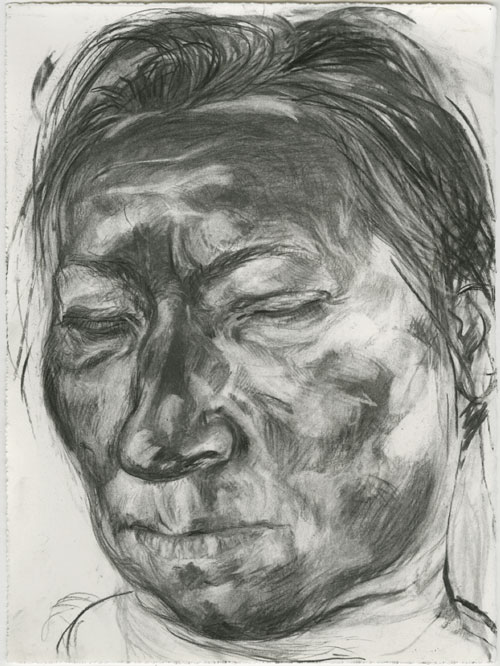https://artuk.org/discover/artists/taylor-anita-b-1961
I was just a little intimidated by a tutorial with Anita – the Dean of DJCAD and the founder of Drawing Projects Uk and the Trinity Buoy Wharf Drawing Prize. Here is an attractive middle aged woman who is intelligent, succesful and a kind person (as far as i can see) I give myself a good talking to, I have my own strengths, I can’t quite remember what they are at the moment though and when she arrives at my desk I babble for as long as I can to try and avoid any sort of meaningful engagement about the paltry sketches I have on the wall.
I can see that she has arrived from another meeting and it takes her a moment to settle. My babbling doesn’t help. It makes her job more difficult, she is working hard to meet the spark of something interesting that could be hidden in the variety of sketches in front of her.
I tell her that I am interested in atmosphere of the moments with the bees, the feeling of the turn of the year, of the natural pigments that colour plant dyed yarn. She listens patiently and shows me an image of glass lungs by Annie Cattrell. That shuts me up. It is so beautiful and so far outside anything that I could ever imagine producing. To blow glass! What an adventure that would be.

There are number of suggestions for new ways at looking at what I have done and how to progress from here. The wooden framed comb could be 3D printed in resin, I could document the honeycomb using a microscope, draw with glass, make and dye paper using the materials around the land, make, shape and form surfaces from tissue paper and japanese papers, draw on paper surface can be modulated by folded tracing paper. It is suggested that I could think more about size and scale of my drawings,look at how the wood comb fills space.The wood contains the comb in a very solid way – what would it be like to float the comb, for it not to be contained?
The suggestions continue;- work on printmaking satin surfaced paper, start with a black ground, fabriano paper, find out about aqueous dispersion, work on gesso grounds, make and draw thing layers onto gesso grounds and seal and layer up. Look at the work of Judy Ingles, (I can’t find any info on Judy Ingles) We talk about materials and the ephemeral nature of the more sustainable materials. This is another reminder of the questions around who the viewer of my work is, is it an ephemeral performative activity or what am I prepared / obliged to do, to make it more long lived – does it need to survive?

Leave a Reply
You must be logged in to post a comment.